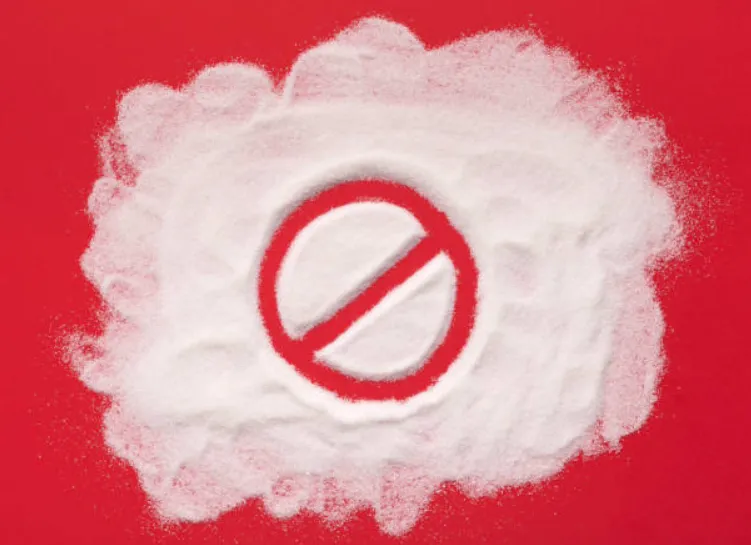THE BLOG
The Ultimate Fitness Blog for Dads
TOPICS
Welcome to Abs For Dads, your premier resource for time-efficient fitness solutions tailored for busy fathers. Discover practical tips and expert advice to transform your health and fitness, seamlessly integrating into your demanding schedule.

Fitness
Explore our curated fitness tips and routines designed to maximize efficiency for the modern dad. Whether at home or the gym, our time-sensitive workouts ensure you achieve optimal results with minimal time investment.

Nutrition
Unlock the secrets of hassle-free nutrition with our easy-to-follow meal ideas and delicious recipes. Abs For Dads empowers you to make informed food choices that align with your fitness goals, promoting vitality and strength.

Lifestyle
Enhance your overall well-being with our lifestyle hacks. From stress management to effective time optimization, our blog covers a spectrum of topics ensuring you achieve success in your fitness journey.

Don't Be A Sugar Daddy: How to Cut Sugar
I’m often asked, “what’s the number one thing I can do to cut fat?” I like to keep things simple, because at the end of the day, that’s what’s realistic. If I could only give one piece of advice, and if you were to change nothing else, lose the sugar. You would be shocked at not only how much better you’d feel, but also the physical difference that you’d notice after several weeks of cutting out the sweet stuff. As busy dads, navigating the dietary landscape can feel like running through a maze blindfolded—especially when it comes to sugar. It's in our breakfast cereals, our go-to snacks, and even in foods that don't taste sweet. But don't sweat it! We’re here to demystify sugar, and help you make smarter choices for a healthier, more energetic life. After all, being a dad is the ultimate endurance sport, and you need the right fuel to keep up with your kids. And you want to look good doing it!
What's the Deal with Sugar?
The Many Faces of Sugar
Sugar isn't just the white granules you reluctantly sprinkle into your coffee. It comes in various forms, affecting our bodies in different ways:
Simple Sugars: Found naturally in fruits and honey, these sugars give you a quick energy boost.
Compound Sugars: Like the sucrose in your table sugar, these are a bit more complex and found in many processed foods.
Culinary Sugars: These include your granulated sugars and syrups that make our pancakes a bit more appealing on Sunday mornings.

Natural vs. Added Sugars
Natural Sugars: These are your allies, found in fruits and dairy, packing nutrients alongside the sweetness. They’re great to snack on just before a workout to give you some easy energy.
Added Sugars: The sneaky villains. They're in many packaged foods and can lead to health problems like obesity and diabetes when consumed in excess.
The Sugar You Eat and What It Does to You
In Food Processing
Sugar is a chameleon in the kitchen, enhancing flavors, preserving our favorite jams, and giving our baked goods that golden-brown finish. But too much can lead to an overly sweet diet, desensitizing our taste buds to the subtleties of natural foods.
Health Impacts

Consuming too much sugar can have a domino effect on your health:
Weight Gain: Sugary drinks and snacks can lead to belly fat, making those games of backyard football a bit puffier.
Heart Health: High sugar intake is linked to increased risk of heart disease—something you want to avoid to keep up with your little ones.
Chronic Diseases: Consistently high sugar levels can lead to type 2 diabetes and other long-term health issues.
How Your Body Handles Sugar
When you eat foods containing sugar, your body breaks them down into simpler sugars like glucose, which enter the bloodstream. This triggers your pancreas to release insulin, a hormone that helps glucose enter your body's cells to be used for energy. This is a really good thing and is how you give your muscles the fuel they need to exert force during workouts. This process is known as the glycemic response.
If the glucose is not needed immediately for energy—say, you’re not chasing your toddler around—it gets stored as fat. Here's how that works:
Immediate Use: When active, your body uses the glucose directly for energy, keeping you fueled and ready to go.
Storage as Fat: If you're less active, especially after eating a sugar-heavy meal, excess glucose is converted to fat and stored in fat cells. This storage can lead to weight gain over time, particularly if your lifestyle doesn't include regular physical activity.
This cycle is why managing sugar intake is crucial, especially for busy dads who need to keep their energy levels balanced throughout the day without packing on extra pounds. This is why we recommend slower digesting carbs (like vegetables) to give you more sustained energy throughout the day rather than relying on faster solutions that often lead to crashes.
The Dad's Guide to Cutting Back on Sugar
Reducing sugar doesn't mean you have to live a joyless, treat-free existence. Here are some dad-friendly ways to cut back without cutting out the fun:
Hydrate Smartly: Swap out sodas for water, flavored seltzer, or unsweetened tea.
Snack Wisely: Instead of reaching for that candy bar, grab a handful of nuts or some yogurt. Be smart though, a lot of yogurts can be chocked full of added sugar or unhealthy fats.
Cook at Home: You control the sugar that goes into your homemade meals, plus it's a great way to bond with the kids.
Decoding Food Labels
Navigating the world of food labels can be tricky, especially when sugar likes to play hide and seek. Here's a dad-friendly breakdown to help you spot hidden sugars and make smarter food choices for your family:
Understand the Many Names of Sugar
Sugar isn't just called "sugar" on ingredient lists. It disguises itself with several names that you might overlook if you're not careful. Keep an eye out for terms like sucrose, fructose, glucose, dextrose, maltose, corn syrup, high-fructose corn syrup, cane sugar, invert sugar, and more. Essentially, if it ends in "-ose," it’s usually sugar.
Check the Ingredients List
Ingredients are listed by quantity, from highest to lowest. If sugar (or one of its aliases) is near the top of the list, that product is likely packed with sugar. This can be a quick check to avoid the most sugar-laden foods without spending too much time analyzing every detail. And don’t be fooled by the serving size only having a couple grams of sugar, as there may be dozens of serving sizes in a pack.

Total Sugars and Added Sugars
Recent changes to nutrition labels have made it easier to understand just how much sugar is in what you're eating. Look for "Total Sugars" on the nutrition facts panel, which includes both natural and added sugars. More importantly, check "Includes Xg Added Sugars" to see how much sugar has been added to the product, beyond what’s naturally occurring in the ingredients. The American Heart Association recommends limiting added sugars to no more than 36 grams (9 teaspoons) per day for men and 25 grams (6 teaspoons) for women. Though we at Abs For Dads recommend limiting added sugar to 25 grams a day across the board to really optimize your health. Even if you go over a bit, your body won’t hate you for it.
Beware of 'Fat-Free' or 'Low-Fat' Traps
Manufacturers often add extra sugar to products labeled "fat-free" or "low-fat" to enhance flavor. Don’t let these labels fool you; the added sugar might make them just as unhealthy, if not more so, than their full-fat counterparts.
Prioritize Whole Foods
The best way to avoid added sugars is to stick to whole, unprocessed foods. However, when you do buy packaged foods, choose those where natural sugars from fruits or dairy are the primary sweeteners, rather than added sugars.
By becoming proficient at reading labels and understanding where sugars hide, you can better manage your family's sugar intake, and keep everyone energized and healthy without the crashes of a high sugar diet. Perfect for keeping up with the kids at the park or during a spontaneous backyard football game!
Embracing the Change: A Lifestyle Shift
Incorporating a Low-Sugar Diet
Transitioning to a low-sugar diet involves more than just cutting out the obvious sweets; it requires a thoughtful shift in your family’s eating habits. Here’s how to make that change manageable and sustainable, ensuring everyone in your family gets the right fuel for their bodies without feeling restricted.
Start with Whole Foods: Begin by basing your meals around whole, unprocessed ingredients. Fresh fruits, vegetables, lean proteins, whole grains, and healthy fats are all staples of a low-sugar diet. These foods are naturally lower in sugar and higher in the nutrients your body needs to function optimally.
Learn to Love Cooking at Home: One of the most effective ways to control sugar intake is to cook more meals at home. This gives you complete control over what goes into your food, allowing you to make healthier substitutions and cut down on hidden sugars. For busy dads, meal prepping once or twice a week can be a game-changer—prepare large batches of staple dishes that can be quickly assembled or reheated throughout the week.
Rethink Your Drinks: Beverages are a major source of hidden sugars. Sodas, energy drinks, and even fruit juices can be laden with sugar. Encourage your family to drink water, herbal teas, or infused water with natural flavorings like cucumber, lemon, or berries. If you or your kids are used to sweetened beverages, gradually reduce the amount of sugar or use natural sweeteners like stevia to ease the transition.
Modify Your Snacks: Snacks are often a hidden source of added sugars. Swap out sugary snacks for healthier options like nuts, seeds, yogurt, or fresh fruit. For kids, try making snacks fun by creating colorful fruit salads, tasty yogurt parfaits, or smoothies with a base of veggies and a bit of fruit for natural sweetness. You can also make healthier versions of certain foods. As an example, you can make a traditional PB&J sandwich healthier by using the following ingredients:
Sprouted whole grain bread
Peanut butter made with no added sugars
Natural jelly without any high-fructose corn syrup
Just these simple changes can go a long way in slashing total sugar without having to give up on tasty food options.
Educate Your Family: Involve your family in the process. Educate them about why reducing sugar is important and how it benefits health. This can include discussing how sugar impacts the body, the difference between natural and added sugars, and reading food labels together. Making it a family endeavor can help reinforce these habits among everyone. And trust me, it’s a lot easier to stick to a healthy change when you’re going at it together.
Gradual Changes: Abrupt dietary changes can lead to resistance, especially from kids. Introduce changes gradually. If your family is used to having dessert every night, start by replacing dessert with something healthier a few nights a week, or reduce the portion sizes.
Focus on the Gains, Not the Losses: Instead of focusing on what you’re cutting out, emphasize the delicious and nutritious foods you’re adding to your diet. Celebrate the new flavors and recipes that come with eating whole and healthy foods.
By adopting these strategies, transitioning to a low-sugar diet can become a positive and health-boosting experience for the whole family. It’s not just about reducing sugar intake but also about making lifelong changes towards better health and vitality—essential for any busy dad wanting to keep up with the fast pace of family life.
Engage in Regular Physical Activity
Pair your healthy eating with regular exercise. Whether it's chasing the kids around the park or committing to a daily workout routine, staying active helps regulate your blood sugar and boosts overall health. If you need workout ideas check out some of our other posts like these:
Want to step it up a notch? Have the Abs For Dads team build your workouts for you. We offer multiple options from our flagship 12-week transformation program to an individualized 8-week custom program designed just for you without any other commitments. Choose what fits into your life best and start getting fitter today!
The Bottom Line
Cutting down on sugar is a powerful way to lose some weight, enhance your health and set a great example for your kids. By understanding sugar's roles and impacts, making informed choices, and gradually adjusting your family's diet, you can enjoy sweet moments without the sugar overload.
Remember, every small change adds up to a big difference. You're not just avoiding sugar; you're building a legacy of health for your family. So, let's keep it sweet—responsibly!
Key Takeaways:
The Real Impact of Sugar: Understand the different forms of sugar and their effects on your health is crucial. While natural sugars found in fruits and dairy can be beneficial, added sugars commonly found in processed foods can lead to health problems like obesity, heart disease, and diabetes.
Recognizing Sugar Sources: Sugar comes in many forms and hides under various names on ingredient lists, such as sucrose, fructose, and glucose. Becoming familiar with these can help you make smarter choices about what you eat and drink.
Health Risks of Excess Sugar: Consuming too much sugar can have severe health implications, including increased risk of chronic diseases like diabetes, detrimental effects on heart health, and contribution to obesity by promoting fat storage.
Strategies for Reducing Sugar Intake:
Hydrate Smartly: Choose water, unsweetened tea, or flavored seltzers over sugary sodas.
Smart Snacking: Opt for healthier snack options like nuts or yogurt instead of candy bars or other sugary snacks.
Home Cooking: Cooking at home allows you to control the amount of sugar in your meals.
Navigating Food Labels: Learning how to read food labels effectively can help you avoid unnecessary sugars. Look for "Total Sugars" and "Added Sugars" on labels to understand how much sugar is in your food, and be wary of products labeled "low-fat" or "fat-free," which can often contain added sugars to compensate for flavor.
Incorporating a Low-Sugar Diet: Transition to a diet focusing on whole, unprocessed foods like fruits, vegetables, and whole grains, which naturally contain less sugar. Gradually introduce these changes to make them more sustainable and less resistant, especially among children.
Engage in Physical Activity: Regular physical activity not only helps counteract the negative effects of sugar but also enhances overall health. Combine this with a low-sugar diet for optimal health benefits.
Educational Approach: Involve the entire family in learning about sugar's effects and how to make healthier choices together. This shared approach can make adapting to a low-sugar lifestyle easier and more enjoyable for everyone.

Where Busy Dads Thrive in Health and Fitness!
Join the Abs For Dads community and redefine your health and fitness narrative. Bookmark our blog for ongoing insights. Prioritize your health without compromising your busy lifestyle – because being a fit and active dad is within reach.
Like What We're Saying? Sign Up For Our Newsletter!

Call 877-395-7147
Email:travis@absfordads.org
Site: www.absfordads.org

Abs For Dads LLC Privacy Policy
